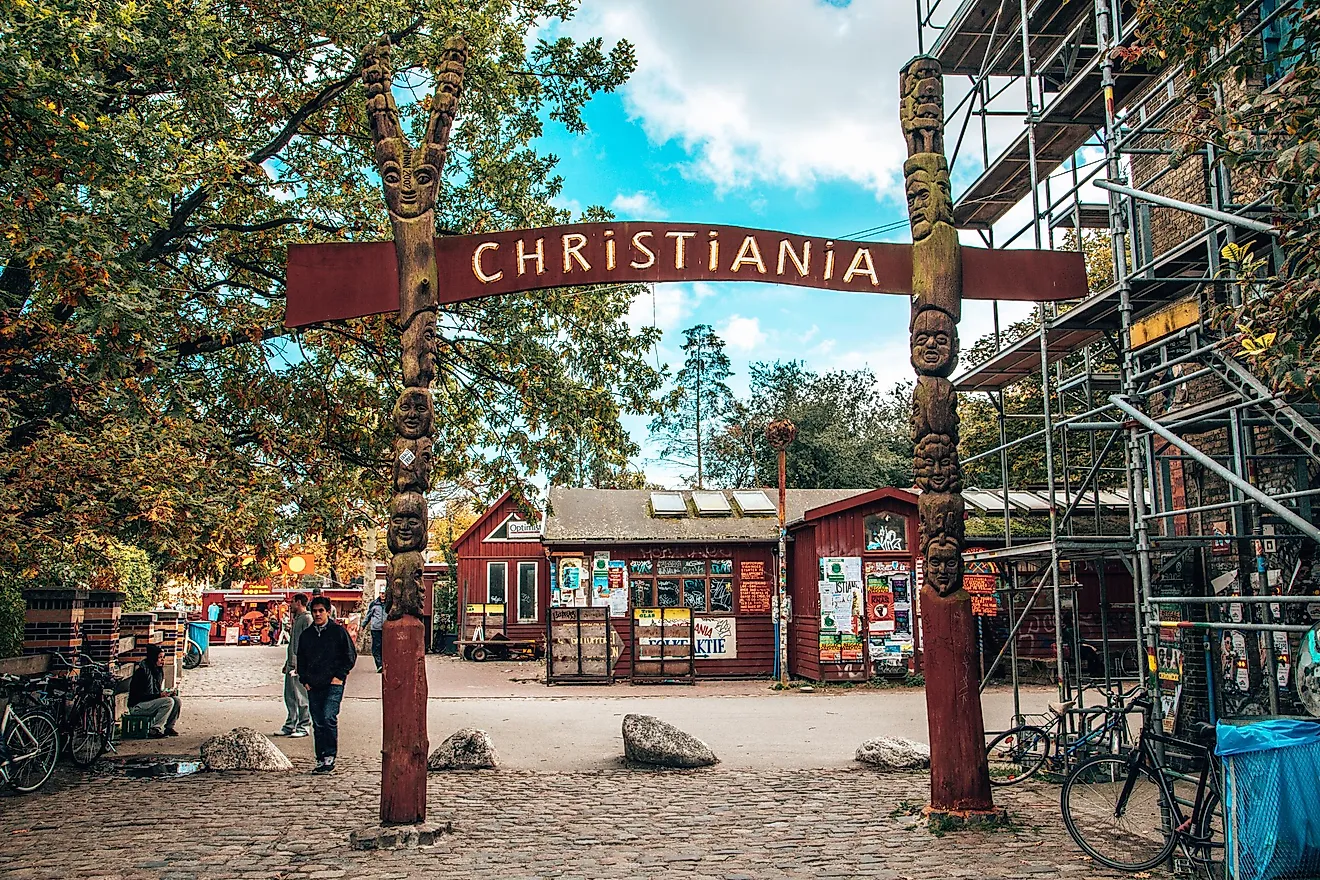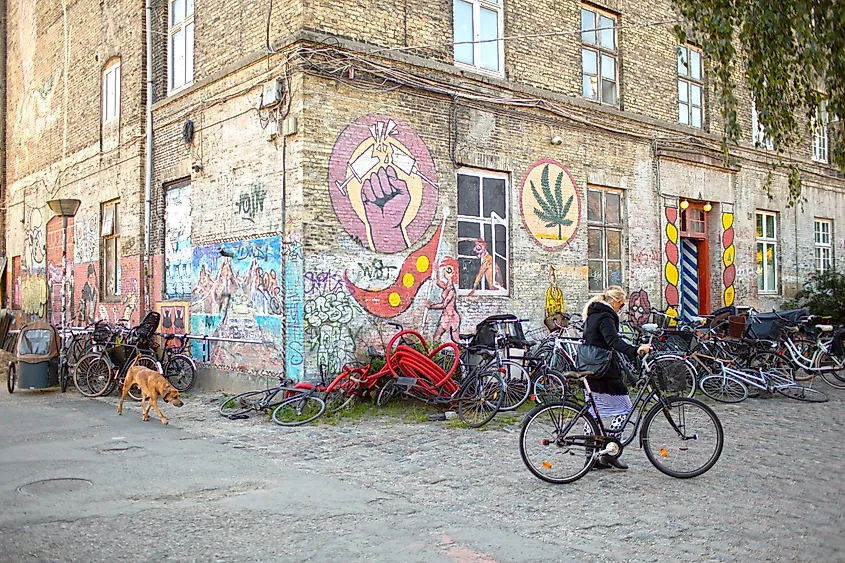How Did Copenhagen's Commune Freetown Christiania Originate?

- Freetown Christiania was first formed in 1971 after people broke into and squatted in abandoned military buildings in Copenhagen.
- The area of Christiania consists of the former military barracks of Bådsmandsstræde and parts of the city ramparts.
- Freetown Christiania is famed for its Green Light district where marijuana is openly sold.
Enter the hippie commune that exists in its own entirely beautiful idealistic world in the center of Copenhagen, the Danish capital city. If ever there was a place that epitomized the free-spirit of anarchists and hippies of decades long past, this city within a city is it. Freetown Christiania, also known as Christiania or Fristaden Christiania in Danish, is a residential community and commune of about 850 to 1,000 residents who all hold common values and share a somewhat offbeat lifestyle. It is located in the borough of Christianshavn in Copenhagen. Despite its seemingly idyllic and alternative existence, this community has been a hotbed of controversy since its creation.
Origins
But how exactly did this free-spirited community come to be?
The area of Christiania consists of the former military barracks of Bådsmandsstræde and parts of the city ramparts. These ramparts and the aforementioned borough of Christianshavn—which was then a separate city—were chartered in 1617 by King Christian IV, who also claimed the beaches and islets in the area. Years later during a war known as the Second Northern War the area's ramparts would be further reinforced by Christian V, forming a solid ring of defence. As for the barracks of Bådsmandsstræde in the same area, these housed the royal artillery regiment, the army materiel command, and various ammo labs and depots. They were no longer in much use after World War II, becoming fully abandoned between 1967 and 1971.
It's from here that the story of Christiania really begins. After the military presence in the area faded, only a few watchmen remained to guard the area which was mainly trespassed by homeless people who wanted to use the empty buildings. In September of 1971, the inhabitants of a nearby residential area would break down the fences to take over the unused facilities as a playground for their children. Though it wasn't explicitly marked as such in the beginning, some would later argue that this was done as a form of protest against the government, which at the time struggled to provide suitable housing for its residents. Later that same month, Jacob Ludvigsen, a journalist, would officially write about and announce the area as the "forbidden city of the military." More importantly, Ludvigsen would emphasize the area as a free town and a place meant for settlers who wanted the chance to build a society from scratch. He would become instrumental in writing the free community's mission statement which talked of creating a self-run society where each individual had to contribute to the wellbeing of the community with the ultimate goal of being economically self-sustaining.
From these humble beginnings, an entire community was born, as people from the hippie movement, squatters, anarchists, and collectivists all moved to the area to make it their own.

A Free Community
This community formed by these free-spirited radicals would come to be known for its progressive and liberal attitudes, and the artsy, whimsical nature of its districts. Meditation and yoga would become pervasive and the area would also spawn a theatrical group called Solvognen who staged performances in Christiania and throughout Denmark. It's also known for being open and supportive of drug addicts. Another key aspect of the community is its thriving LGBTQ+ community, with the Gay House existing since the 1970s as one of the commune's independent institutions. This building acts as a center for gay activism, parties, and theatre that is renowned throughout the queer Copenhagen community.
And of course, no discussion of Christiania can go without mentioning its main artery, Pusher Street, or the Green Light District, where hash and marijuana are openly sold from permanent stands that line the area. No hard drugs are allowed, however, and there have been heated controversies and disagreement regarding the existence of this market.
The result of this social experiment, along with the alternative atmosphere of the whole commune, Christiania ranks as the fourth largest tourist attraction in Copenhagen, drawing in half a million visitors annually. This is hardly surprising as it's a uniquely liberated Danish community and it's one that doesn't seem to be going anywhere anytime soon.











